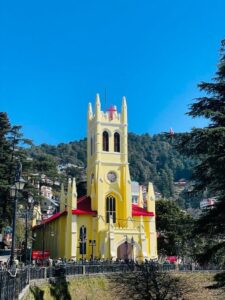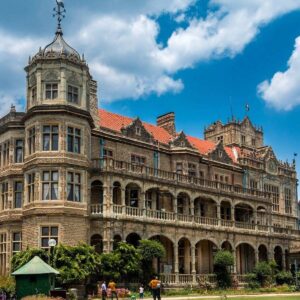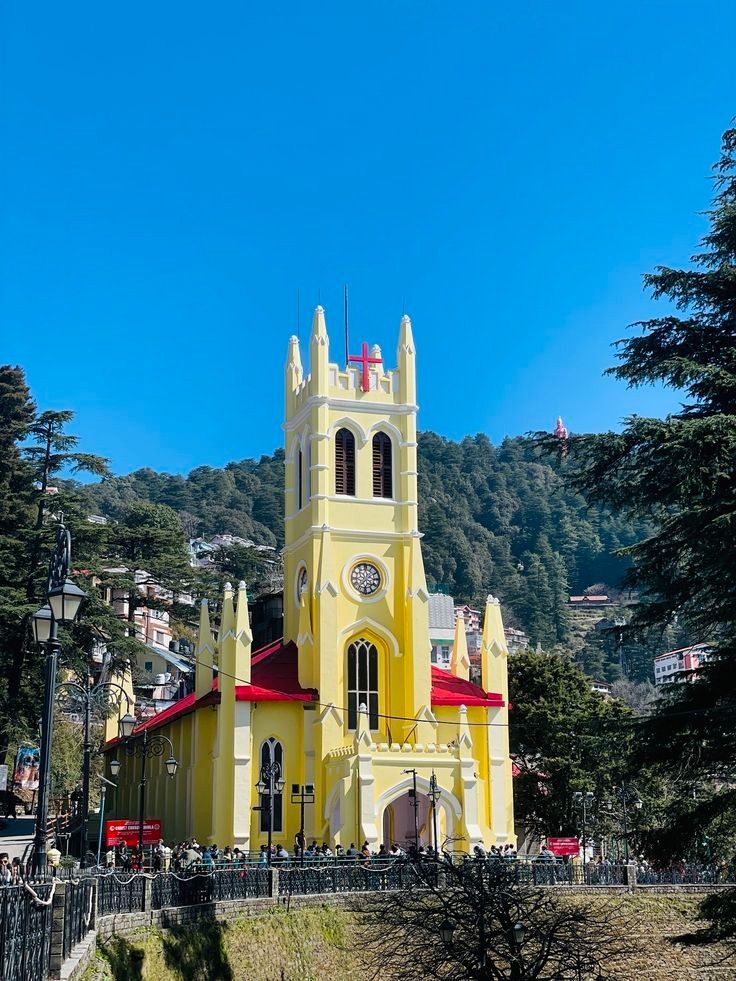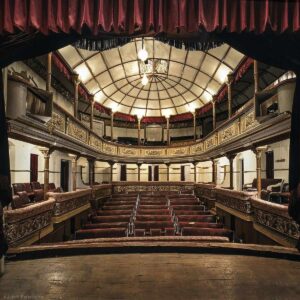Introduction – The Crown Jewel of Shimla’s Heritage

High in the cool embrace of the Himalayas, atop Observatory Hill in Shimla, stands one of the most breathtaking colonial landmarks of India — the Viceregal Lodge, also known as Rashtrapati Niwas. Built in 1888, this palatial estate is not only a masterpiece of Victorian architecture but also a silent witness to the shifting tides of Indian history.
For decades, it served as the summer residence of the British Viceroys, where some of the most crucial political decisions of the late colonial period were made. It was here that the 1945 Simla Conference convened — a meeting that played a significant role in shaping the destiny of modern India. Post-independence, the Lodge transitioned into the Rashtrapati Niwas, the summer retreat of the President of India, before being repurposed as the Indian Institute of Advanced Study (IIAS) in 1965, an institution dedicated to academic excellence.
Today, the Viceregal Lodge attracts not only historians and scholars but also travelers, architects, and culture enthusiasts. It offers a rare glimpse into the grandeur of the British Raj, the intellectual vigor of modern India, and the beauty of Shimla’s scenic surroundings.
This blog takes you on a 5,000-word journey through the story of the Viceregal Lodge: its conception, architecture, political significance, transition in post-independence India, and its role today as a hub of research and tourism.
History of Viceregal Lodge – A Dream in Stone
Why Shimla?
Shimla, by the mid-19th century, had emerged as the summer capital of British India. Its salubrious climate, panoramic views, and distance from the sweltering heat of the plains made it the ideal administrative retreat for the British elite. However, the existing Viceregal residence — Peterhoff — was modest and lacked the grandeur expected for the most powerful office in the empire.
It was Lord Dufferin, Viceroy of India from 1884 to 1888, who felt the need for a proper palace-like residence. He envisioned a home that would not just house the Viceroy but also stand as a statement of imperial authority.
Construction and Architect
The construction began in 1884, under the direction of Henry Irwin, a British architect celebrated for his Indo-Saracenic and European revivalist styles. Irwin was already a well-known name in India; he later went on to design the Mysore Palace, the Madras High Court, and Shimla’s own Gaiety Theatre.
The project took four years to complete, and in 1888, the Viceregal Lodge was inaugurated. At its unveiling, the estate left the audience spellbound. Lord Dufferin reportedly said that the Lodge was “not only fit for a king but also for an emperor,” underscoring its magnificence.
Architectural Brilliance of Viceregal Lodge
Style and Design
The Viceregal Lodge is built in the Scottish Baronial style, with touches of Jacobethan revival architecture. This architectural choice was deliberate: the Baronial style, with its turrets, towers, and gables, evoked the imagery of European castles, symbolizing power, authority, and continuity of the British crown.
Key highlights:
- Grey sandstone and blue limestone façade — imposing yet elegant.
- Towers and turrets — giving the building a castle-like aura.
- Sloping roofs and tall chimneys — designed for Shimla’s snowy winters.
Interiors
The interiors exude Victorian opulence:
- Entrance Hall: A grand wooden staircase, Burma teak paneling, and intricate carvings welcome visitors.
- Ballroom: Once the venue for imperial banquets, with fireplaces and chandeliers illuminating evenings of political and social gatherings.
- Library: Housing thousands of rare manuscripts and volumes, it remains a crown jewel for scholars.
- Dining Hall: With its long oak tables, the hall hosted Indian princes, British generals, and foreign dignitaries.
The Gardens
Spanning more than 100 acres, the Lodge’s gardens are landscaped in the style of English estates, featuring pine, oak, and rhododendron groves. Sweeping lawns provided the perfect setting for tea parties and evening promenades. Today, visitors can stroll through these lush gardens while admiring panoramic views of the surrounding Himalayas.
The Viceregal Lodge During the British Raj
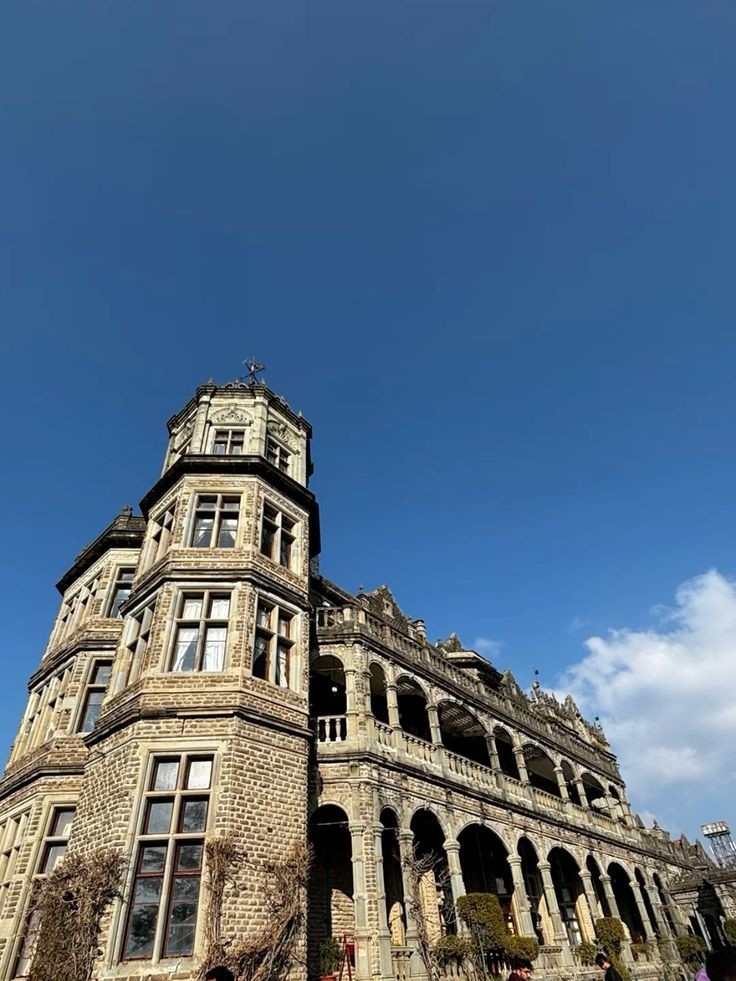
The Lodge was not just an extravagant residence; it was a seat of power. Each summer, the entire administrative machinery of British India would shift from Delhi to Shimla. Viceroys governed from here, holding meetings, planning policies, and entertaining royalty and officials.
The Lodge became a hub of imperial diplomacy. Decisions affecting millions were taken within its halls, from discussions on trade policies to wartime strategies. Its grandeur reinforced the authority of the Viceroy — the representative of the British monarch.
Prominent Viceroys like Lord Curzon, Lord Irwin, and Lord Mountbatten used the Lodge extensively. The sense of command it offered over the Indian subcontinent was not just symbolic; it was operational.
The 1945 Simla Conference – Politics in the Palace
One of the most significant episodes in the Lodge’s history was the Simla Conference of 1945, convened by Lord Wavell, then Viceroy of India.
Backdrop
By 1945, World War II had ended, and the British government was under immense pressure to grant independence to India. The Indian National Congress, the Muslim League, and other parties were at loggerheads over the future political framework.
The Conference
Held within the Viceregal Lodge, the conference brought together leaders like Mahatma Gandhi, Jawaharlal Nehru, Sardar Patel, and Muhammad Ali Jinnah. The main agenda was the Wavell Plan, which proposed the reorganization of the Executive Council with more Indian representation.
Outcome
Despite the grandeur of the setting, the conference ended in failure. The Congress and the Muslim League could not reconcile their differences, especially over the issue of separate representation for Muslims. This deadlock eventually paved the way for the Partition of India in 1947.
The walls of the Viceregal Lodge thus witnessed heated debates that shaped the destiny of South Asia.
Post-Independence Transformation – Rashtrapati Niwas
After 1947, the Lodge ceased to be the seat of British power. It was renamed Rashtrapati Niwas and became the summer residence of the President of India. However, due to the logistical and financial challenges of maintaining such a large property, it was rarely used by presidents.
Indian Institute of Advanced Study – A New Chapter
In 1965, under the guidance of then-President Dr. S. Radhakrishnan, the Viceregal Lodge was repurposed into the Indian Institute of Advanced Study (IIAS). This was a fitting tribute to its legacy of intellectual and political discourse.
Role of IIAS
- Promotes advanced research in humanities and social sciences.
- Hosts scholars from India and abroad.
- Preserves a rich library of manuscripts and archives.
- Conducts conferences, seminars, and public lectures.
The transition from colonial seat of power to an academic institution symbolizes India’s evolution — from imperial subjugation to intellectual self-determination.
Tourism Guide – Visiting Viceregal Lodge
For travelers, the Viceregal Lodge is one of Shimla’s top attractions.
Entry Timings
- Open all days except Mondays and national holidays.
- Guided tours conducted at regular intervals.
Tickets
- Nominal entry fees for Indian and foreign visitors.
- Special charges for photography inside.
Highlights for Tourists
- The guided tour covers the Entrance Hall, Library, Ballroom, and Dining Hall.
- Gardens are open for leisure walks.

- Photography is allowed only in designated areas.
Best Time to Visit
- March to June: Pleasant weather and lush greenery.
- October to December: Clear skies and crisp air, with chances of light snowfall.
Preservation and Conservation Challenges
Maintaining the Viceregal Lodge is no easy task. The building is over 130 years old and faces challenges such as:
- Weathering due to Shimla’s harsh winters.
- Visitor pressure, as thousands of tourists flock here each year.
- Restoration needs to preserve wooden interiors and rare manuscripts.
Authorities, including the Archaeological Survey of India (ASI) and the Himachal Pradesh government, continue to work on conservation measures.
Legacy of the Viceregal Lodge
The Lodge stands as a powerful reminder of India’s colonial past and its journey towards independence. It is:
- A symbol of British authority, reflecting the might of the empire.
- A witness to history, especially the events leading to Partition.
- A center of learning, through its role as IIAS.
- A tourist magnet, showcasing Victorian architecture in the Himalayas.
Its story encapsulates India’s transformation — from being ruled to becoming a republic that values scholarship and heritage.
Conclusion – A Living Museum of Indian History
The Viceregal Lodge is not just a building; it is a living museum of Indian history. From the corridors that echoed with the footsteps of British Viceroys to the rooms where Gandhi and Jinnah debated India’s future, every brick of this estate carries the weight of history. Today, as the Indian Institute of Advanced Study, it nurtures intellectual thought, ensuring that the legacy of dialogue, debate, and discovery continues.
For travelers, it offers a chance to step into the pages of history. For scholars, it is a treasure trove of knowledge. For India, it remains a proud reminder that colonial relics can be transformed into institutions of learning and culture.
Visiting the Viceregal Lodge is not just a sightseeing experience — it’s a journey through time.


